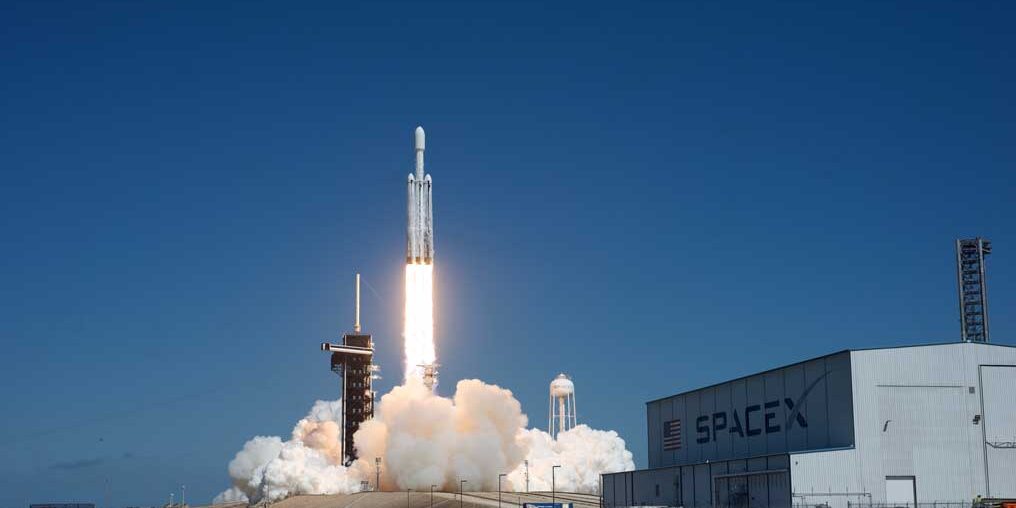Only two days after Hurricane Milton, by then a Category 1 storm, passed just seven miles away from Cape Canaveral, Europa Clipper lifted off into cloudless blue skies aboard a Falcon Heavy Expendable rocket. Europa Clipper will be “unveiling the mysteries of an enormous ocean lurking beneath Jupiter’s moon Europa.”

Kirby Kahler
Two of Europa Clipper’s three first-stage rockets had flown once before, launching Psyche toward the asteroid belt. Clearly visible in the launch video feed, those two side boosters bore scorch marks from their previous experience, except for the tall triangular patches where their landing legs had covered the rockets near their bases. Europa Clipper’s rockets launched without landing legs; they’d been removed to lighten the rocket to give Europa Clipper as much thrust as possible.
All three first stages crashed into the Atlantic Ocean and won’t be recovered. The only pieces of the rocket that will come back to shore are the clamshell halves of the nose fairing that protected the spacecraft through Earth’s atmosphere.
The picture-perfect launch put the spacecraft into a brief parking orbit before the second stage fired again, sending the spacecraft on to Mars. Every moment in the 1-hour launch sequence received the greatest of praise from mission controllers: “nominal.”
The next milestone for Europa Clipper is the unfurling of its gargantuan solar arrays. There are tensioned cables holding the accordion-folded and spring-loaded arrays to the spacecraft. Laser knives will cut those cables about two hours after spacecraft separation, and it will take about 10 minutes for the arrays’ panels, five of them on each side, to spring into place. Fully extended, they make the spacecraft more than 30 meters (100 feet) wide.
Next stop for the Europa Clipper is Mars, a gravity-assist flyby that is just over four months away. It’s an unusually short trip, and the spacecraft has a lot of work to do before then. The next month will be an intense period of initial checkouts of systems and instruments.
Once Europa Clipper has passed its checkouts, the mission will deploy the 8.5-meter (25-foot) boom for the magnetometer instrument, extending it far away from the electronic noise of the spacecraft’s body. The last major deployment: four antennae, each 2.6 meters (8.5 feet) long, for the REASON radar sounder.
NASA
It’ll take more than five years to get to Jupiter, with an arrival date of April 11, 2030. But there’s a lot to do in those five years, not the least of which is building out the software and interface tools the flight team will use to plan science operations and command the science instruments. At the same time, they’ll plan specifically how to use each flyby of Europa to fill out the mission’s required data. They’ll also be looking for opportunities to do science on Jupiter’s other moons as well as collaborating with ESA’s Juice mission to prepare for joint operations after Juice’s arrival.
For now, though, the mission team deserves to take a little time to enjoy the relief that their spacecraft — the largest ever sent on an interplanetary mission — has made it to space today. Go Europa Clipper!

